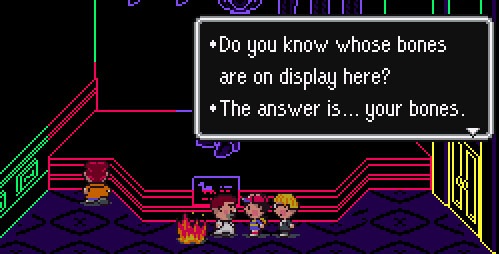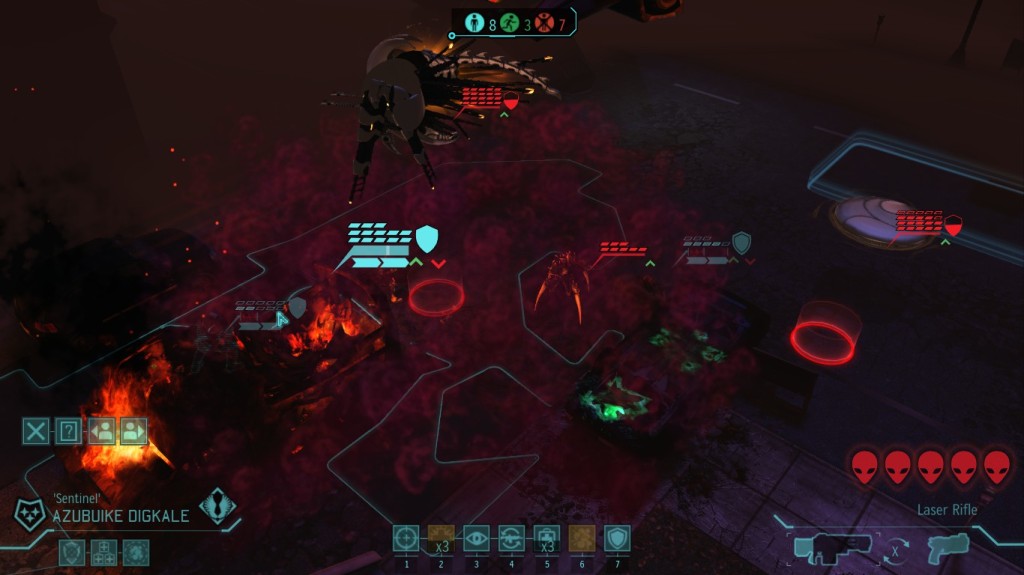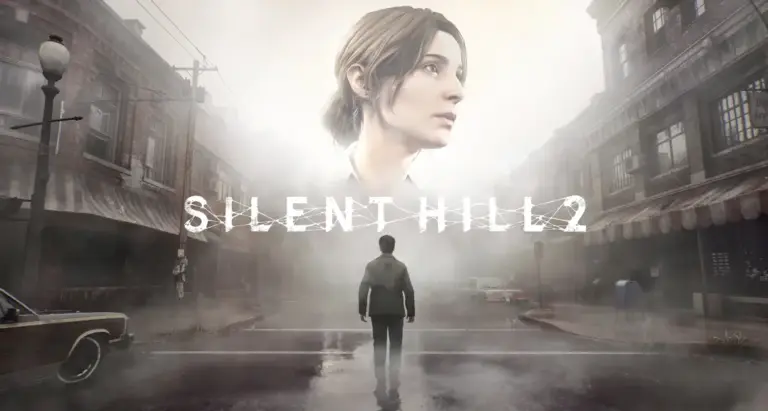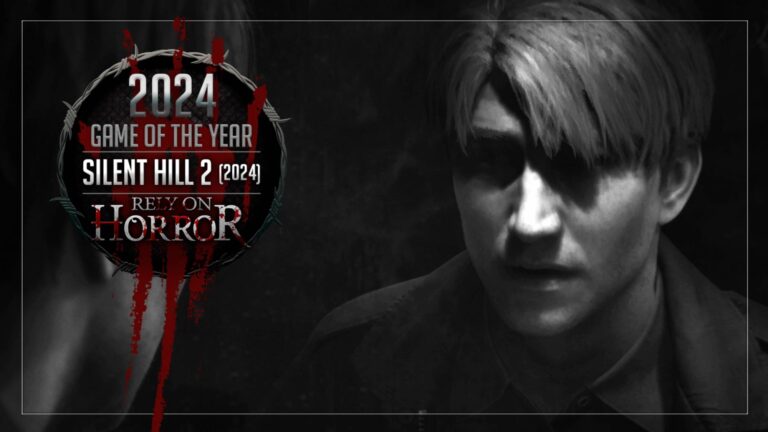Rely on Horror is a site dedicated to reviewing and discussing horror games, but one fact we often ignore is that good scares don’t always come from this genre alone. I have often found myself trying to play something non-horror, only to end up frightened in the corner of the room anyway. Today we are going over my personal “Top ten- you probably read the title already”.
The rules are simple:
- Only games I have played and remember.
- Levels can be any stage or area of the game.
- Every time I make an exception on rule #1, a baby seal watches as his mother is turned into a coat.
With that said, I hope you all enjoy this list!
#10: Lost in Dreams
Lost in Dreams is part of the main quest in Dragon Age: Origins and involves the Grey Warden’s team entering into the metaphysical dream world known as “The Fade”. The player will have to escape this area as soon as possible, as the demon who cast the group into this dream is destroying their bodies in the real world. The area is set up as a maze separated in several parts, but to navigate through it requires the players to find certain characters that will give them transformation-powers (e.g. a mouse form that lets them enter small holes, a golem that lets them break stuff and so forth). It’s definitely a long and difficult section, but the design of both the areas and the demons really sells it.
Furthermore, it’s also where most of the characters are fleshed out more, since anybody you brought into The Fade will be trapped in their own personal nightmares. Finding and freeing them is an integral part of the puzzle, as well as necessary if you plan on ever beating the Sloth Demon at the end of it.
#9: Lavender Town
Lavender Town is an area from the Pokémon franchise that seems to be a fan-favorite for Creepy Pasta writers. The location is first visited after Vermillion City and the second you enter it, the music changes from the usual tunes into a very weird and disturbing theme. You may also notice that the townsfolk feel a lot like puppets sometimes and speak very uncannily. That alone is pretty odd, but Nintendo decided to take it one step further and actually made this town into one massive graveyard.
The large tower in the town is not the haunted mansion that the anime made it out to be, but it’s actually where the largest portion of deceased Pokémon are put to rest. It’s still haunted, but this time by a spirit whose physical form was beaten to death by the criminal syndicate that serves as the franchise’s main antagonists. Furthermore, you find your rival in the tower and learn that you might actually have been responsible for the death of his Ratticate, which he never again uses after the battle that preceded the one in the tower. I am not interpreting or exaggerating any of this, this is all said and explained in-game. E for Everyone people…
The only real problem with this area is that you can’t complete it in one sitting, since you actually need to visit some other locations in order to reveal the true nature of the spirit. Other than that, it’s a fairly unique and entertaining scare that snuck its way into many a childhood.
#8: Terror Missions (Xcom)
Xcom: Enemy Unknown is a game in which you control the entirety of a military outfit during an alien invasion. You have to manage your resources, train your soldiers and keep the investors happy in order to save our planet. The challenge comes from the fact that the difficulty curve keeps going whenever you get stuck on something, so whenever you lose a soldier and have to train a new one, the aliens just keep sending stronger units that can easily kill your trainee in one hit. The best tactic in this game is to slowly explore each level in the game, putting units in overwatch mode (which gives them a reaction shot when enemies get close), and just never rush your moves… unless you are in a “terror” mission.
Terror missions usually show up when a country is preparing to pull support from your initiative, so doing well on these is very important. The goal is always to save as many citizens as possible, which are hiding around the map and have the tendency to run around like idiots. Unlike most other missions, though, enemies actually move in these stages and seek out tasty civilians as well. This forces you to take chances, rush soldiers into unexplored areas or just sending them out of cover. These are also the only levels in which you encounter zombies, who hit like a tank and give poison damage to your troops. Terror Missions are always adrenaline-pumping and that’s why they deserve the number #8 spot on this list.
#7: Milla’s Nightmare
Agent Milla Vodello is one of the main characters from Tim Schäfers Psychonauts and, at first glance, appears to be a very cheerful and normal woman. Her mind serves as a training level for the levitation skill and is largely designed to resemble a huge party that is been broadcasted over television, a fairly obvious portrayal of her desire to become a celebrity. Early on in the level there is a secret doorway, though, which is very hard to spot on your first run through the game. If you do find it, then you will enter a small room filled with toys and the music will slowly mute. Milla will ask you what you are doing, but since there is a vault jumping around the room, players are likely to ignore her pleas.
Opening the vault reveals part of Milla’s backstory, detailing that she used to work at an orphanage filled with kids who saw her as a mother-figure. One day, though, she returned from buying groceries to find the orphanage on fire and she was unable to do anything about it. Worst of all: since Milla is a psychic, she could hear the children crying for help. That alone is pretty depressing, especially if you found it later in the game or after finishing it once already and had started to take a liking to the character. The depressing themes don’t end there; simply hit the chest in this room and it will open up for you. Jump in and you will arrive in Milla’s personal nightmare. I won’t spoil what it looks like, since this has to be observed personally.
#6: The Insane Asylum (Fahrentheit)
Fahrentheit is the spiritual predecessor to Heavy Rain and, just like its successor, played out as a mystery with multiple protagonists that the player switches between. If you don’t remember this game, then I won’t blame you, since most people prefer to pretend it never happened. I did rather enjoy it myself and found myself getting somewhat fond of the characters, one of which was Liuetenant Carla Valenti, a strong and independent detective.
Carla has claustrophobia however, so she tries to avoid small and dark environments as much as possible. There is a brief section early on in the game where the player has to help her find some recordings in an underground basement and they are tasked with keeping her breathing regulated while puzzling. This is used again later on when Carla finishes interviewing a murderer in an asylum… an insane asylum. Long story short: the power dies and this automatically opens all the cells (boy, that’s some shitty security). The player now has to navigate to the exit in the dark and, at the same time, alter between regulating Carla’s breathing and holding it whenever a killer is close. This scene was very well done and is one of the few end-game sections that stuck to the gritty and realistic feel that the game started out with.
#5: Moonside
I am going to be honest with you and say that Earthbound is one of the main reasons that I am doing this list, I only recently got my hands on this game and I absolutely loved it. I didn’t want to be generic and put the Cave of the Past on the list, though, especially not since everybody seems to love spoiling it and I want no part of that. I instead picked Moonside, which is a little more obscure and, in my opinion, much better.
You enter Moonside by interacting with a secret event in the pub located in the city of Fourside, which instantly sends Ness and Jeff into a psychedelic copy of the city. Everything is covered in bright neon-colors contrasting with pitch black in this area, but it’s also characterized by the reversed logic. Earthbound is already a weird game on its own, but Moonside is strange even by those standards. It’s also rather difficult, due to the many enemies that spawn here and their strong nature. Also keep in mind that you don’t have the character of Paula in your party now, so that takes away your most powerful PSI-user and makes it even more difficult to handle combat situations against multiple enemies. Navigation is equally as difficult, since there are invisible barriers everywhere and you have to use teleporters to get around.
The section is rather brief and nobody ever references it again, but it’s still very intriguing and uncomfortable to experience. Definitely a recommendation.
#4: Mansion of Madness
Timesplitters: Future Perfect took on a much sillier attitude than the previous two games, which were already surreal themselves. This was the first time however that the designer mixed the goofy elements into the story and that’s also why this level only makes it to #4 on this particular list. In this mission you are send back to 1994 and tasked with finding a scientist. Since the laboratory is located in a mansion, you can of course expect it to be haunted. The setup might seem simplistic, but the enemies look awesome, there are some neat boss-fights with gargantuan horrors and it’s paced very well. Sadly, you will have to go through it entirely with a slutty teenager stapled to your back.
Fighting a deformed deer monster loses some of the charm when you are doing it to protect a loudmouthed 16 year old dressed in what is technically a few scraps of cloth and leather. I can’t really stand slutty design, but even if she’s not the worst character around (she becomes somewhat interesting), it’s still a shame we can’t enjoy the location alone and in silence. There are no real issues besides that, though, so overall the area is a massive success, short one misstep. It does make for some good scares when the game sends out zombified copies of the girl, so she’s useful for that at least. I was also born in 1994, so I am going to count that as a plus.
#3: The Gate
The Gate is the eight chapter in Spec Ops: The Line and I would rather just leave it at that and move on to #2. That’s not because I have very little to say or because of my laziness, but simply because this goes very deep into spoiler-territory. If you haven’t played Spec Ops yet, then please skip to the next entry, as this scene has to be experienced personally for the desired effect!
The Gate seems like a very fun chapter at first glance: give the player a mortar and let them fire it on powerless enemies. This also happens early on in the game, at a point where the player could be excused for not having noticed the depressing anti-America theme of the game yet. This section is one big trick and the turning point of the entire game: as you fire on your enemies it feels like you are meant to have fun and very little consequences would follow from it, similar scenes from the Call of Duty franchise also presented it as a fun distraction. However, it ends with a shot that you must take at a densely guarded area… odd.
When you leave the cannon and move into the field, you suddenly start to feel a little bad. In other games corpses would either disappear or just be corpses, but now you must slowly walk across an area with young men struggling to stay alive as lethal white phosphorus fills their lungs or they are just bleeding out in a ditch. They beg you for help, but they are beyond helping. The finishing blow comes when you go to that guarded area and a dying soldier simply asks “why?”, upon turning around, you notice that they weren’t killing people, but protecting them, and you unknowingly burned women and children to death. I genuinely felt sick after this and it will always stick out to me as one of the most powerful scenes in all of video games.
#2: Malus
I spend a very long time arguing with myself over whether or not Malus from Shadow of the Colossus was to be classified as a level or a boss, but ultimately sided with the former. The mission starts at Dormin’s shrine and to reach your destination, you must cross almost the entirety of the map. This is intentional, I believe. Crossing this large open world one last time makes you think about how empty it feels and also makes you realize that you are partly to blame for that. Just before you reach Malus, a bridge collapses as you cross it and has your horse plummets into the abyss, raising the emotional stakes even further after countless hours of adventuring with just the beast.
Malus himself is immense, but to even reach him you must first cross a large area as he flings powerful magic at you. This forces you to run from cover to cover, time your movements and duck in and out of caves. No other colossus plays out like this, so it already feels special and emphasizes how pathetically small you are. When you do reach the destination, Malus becomes rather helpless and you can climb on him. This is a difficult climb and eventually Malus will try to swat you off or otherwise stop you. You have to use his attacks in your favor to ascend higher, eventually reaching his skull and penetrating it with your sword. The music in this scene makes it stand out and the powerless feeling you get when clinging to a monster a million times more sizable than you is more frightening to me than any zombie could achieve.
#1: Day 3
Majora’s Mask is a story in which every event plays out on a set time over the course of three in-game days and at the end of the cycle, the moon crashes into the world and causes the apocalypse. The player takes on the role of Link and has the power to restart this 3-day cycle an infinite amount of times and slowly piece together a solution to the impending doom. There are a lot of depressing and demonic elements to this game, but my pick for number #1 is definitely Clock Town on the final day and night.
Clock Town serves as the HUB and shopping center of the game and is more or less the safe-zone where players can relax. It has a very town-ish theme song, there are lots of story-threads you can find and it’s a very pleasant place overall. On the third day however, the usual theme song is a little different, as it’s the same tune with a higher pitch and very fast. This alone hints that something macabre is going on, as the tune can be best described as a deranged clown-faced psychopath forcing you to smile (disclaimer: Casper does not know how to describe music). The city is also practically deserted, since nobody wanted to stay for the carnival and has thus abandoned their tradition for the sake of safety. At this point the moon is also dangerously close to the city, which constantly reminds you of the job at hand.
Normally you’d just be able to reverse time and avoid seeing this, but you have to stick around in order to start the final battle and for the Kafei quest-line. This is where Majora’s Mask becomes an emotional rollercoaster, as you sit around in a room waiting for Kafei, who’ll only show up in the last few seconds before the end of the world. You hear a clock banging loudly in the background, fireworks are fired in an attempt to bring some final joy into the world, the organizer of the festival stands abandoned in the square as he challenges the moon to end everything he has worked to create and the sensei breaks his promise to save the world and cowers in the corner of his house. There has never been a game that made me feel as many emotions as this one, so I applaud you, number 1.















